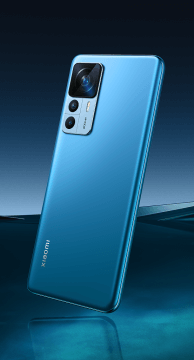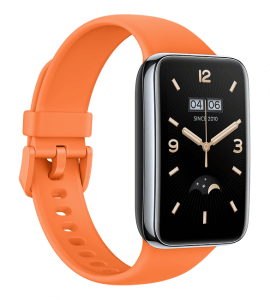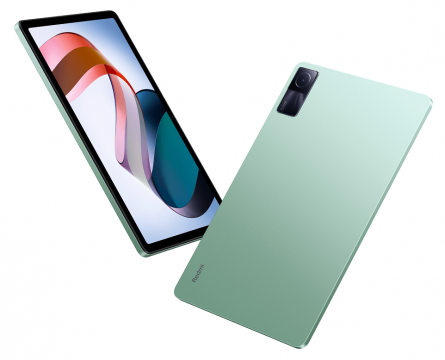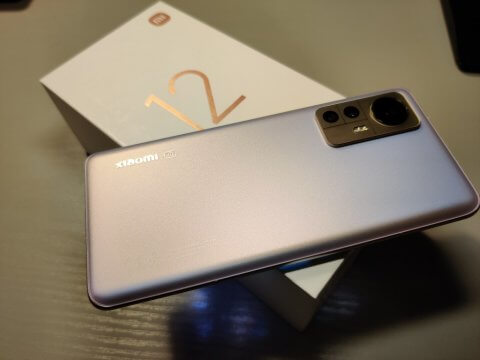 Returning to an in-person event, Xiaomi‘s global launch took place in Munich, Germany with Abi Go, Head of Product Marketing, kicking off the event. Looking at the company, Xiaomi are now #266 in the Fortune Global 500, primarily through 160% growth in the premium smartphone category. The phones are no longer cheap and cheerful, and the Xiaomi 12 received some good reviews, including from myself. Xiaomi isn’t only about phones too – they’re rapidly growing in autonomous driving and robotics as well – but as you’ll see from the launches, Xiaomi is getting well established in consumer electronics.
Returning to an in-person event, Xiaomi‘s global launch took place in Munich, Germany with Abi Go, Head of Product Marketing, kicking off the event. Looking at the company, Xiaomi are now #266 in the Fortune Global 500, primarily through 160% growth in the premium smartphone category. The phones are no longer cheap and cheerful, and the Xiaomi 12 received some good reviews, including from myself. Xiaomi isn’t only about phones too – they’re rapidly growing in autonomous driving and robotics as well – but as you’ll see from the launches, Xiaomi is getting well established in consumer electronics.
 First up was the Xiaomi 12T series, with the 12T and the 12T Pro smartphones. Both very similar in design, with a large main lens dominating the camera array on the rear. To reinforce this, the Pro comes with a whopping 200 MP main sensor and the standard 12T is fitted out with a still-fairly-big 108 MP sensor. Every part of the imaging system has been optimised, from the lens (8P) to the sensor (1/1.22″) and the software (advanced imaging processing). The new ProCut software uses AI to crop and frame images to make any scene look its very best, and the In-sensor zoom allows 2x zoom at the sensor level for clear portraiture. Both phones have an 8MP ultrawide, a 2MP macro and 20MP selfie camera on the front.
First up was the Xiaomi 12T series, with the 12T and the 12T Pro smartphones. Both very similar in design, with a large main lens dominating the camera array on the rear. To reinforce this, the Pro comes with a whopping 200 MP main sensor and the standard 12T is fitted out with a still-fairly-big 108 MP sensor. Every part of the imaging system has been optimised, from the lens (8P) to the sensor (1/1.22″) and the software (advanced imaging processing). The new ProCut software uses AI to crop and frame images to make any scene look its very best, and the In-sensor zoom allows 2x zoom at the sensor level for clear portraiture. Both phones have an 8MP ultrawide, a 2MP macro and 20MP selfie camera on the front.
Inside the 12T Pro is a Snapdragon 8+ Gen 1 with a MediaTek Dimensity 8100-Ultra featuring in the 12T itself. Each chipset offers significant improvements in performance and power consumption over the previous generation. Both phones sport a 6.67″ 1220p resolution and 120 Hz CrystalRes AMOLED display covered by Gorilla Glass 5. The AdaptiveSync display will adjust the screen frequency for a fast and smooth refresh when needed and then revert to a lower power saving rate when not. Sound is by Harmon/Kardon and supports Dolby Atmos for a detailed and rich soundscape.
Keeping the power on is a 5,000 mAh battery with 120 W charging which will charge the battery from 0% to 100% in 19 minutes. With all the improvements to the CPU, the display and the battery, users can expect 13.5 hours of normal screen-on time and nearly 8 hours of gaming. That’s impressive.
Coming in three colours: blue, black and silver, the phones look, and I imagine, feel the part. The Xiaomi 12T Series will be available for sale starting on 20th October via Xiaomi official channels. The Xiaomi 12T Pro (8GB+128GB) will have an RRP of GB£699, and the Xiaomi 12T comes in two storage variants, 8GB+128GB and 8GB+256GB, with an RRP of £499 and £549 respectively.
Next up were vacuum cleaners, starting with the Xiaomi Robot Vacuum X10+ which offers great cleaning for carpets with mop pads that lift up out of the way when the robot encounters carpet. S-Cross AI uses a pile of extra sensors to navigate the home and avoid hazards. X10+ comes with an all-in-one docking station that charges the robot, empties the dirt bag, cleans the mop pads and adds water to the X10+’s reservoir. Of course, the X10+ can be controlled by an app too. The vacuum robot is priced at 899€.
 The W10 Wet Dry vacuum series are a series of wet and dry battery powered vacuum cleaners with a variety of features from assisted power, heated water rollers and base stations. Prices start from 599€.
The W10 Wet Dry vacuum series are a series of wet and dry battery powered vacuum cleaners with a variety of features from assisted power, heated water rollers and base stations. Prices start from 599€.
The third set was for TVs and Xiaomi’s second generation TV Q2 series with QLED screens will come in 50″, 55″ and 65″ sizes. All the TVs support Dolby Vision IQ and Google TV is built-in. Prices start from 599€
Xiaomi’s been producing smart bands for several years and this time it’s the Xiaomi Smart Band 7 Pro. It’s a bit bigger than the previous bands but it’s much more stylish in a rectangular design that’s in keeping with current trends, i.e. it looks a fair bit like one of the market leading smart watches. The 1.64″ AMOLED screen is 84% bigger than the previous generation and the 7 Pro now has GNSS (GPS) built-in for route tracking so your smartphone doesn’t have to come along for the tracking. As before, the Band 7 Pro comes in a range of colours with two new vegan bands, pine green and moon grey, added to the selection. Battery life is around 12 days. All this doubles the cost and the Band 7 Pro will be priced at GB£84.99 / 99€.
 Finally, Xiaomi announced the Redmi Pad, an all-in-one pad for fun. The Redmi Pad comes as a slim and durable medal unibody and is available in mint green, graphite grey and moonlight silver. At 445g it’s roughly twice to three times the weight of a phone but it’s easily portable. The screen is 10.6″ with 2K resolution at 90 Hz and the viewing experience is enhanced by quad speakers supporting Dolby Atmos. Inside is the MediaTek Helio G99 CPU along with an 8000 mAh battery. The camera is sensitively placed along the long edge to make video calls a little bit more natural (cf Samsung Galaxy Tab series) and FocusFrame tracks the users faces to ensure they’re in the picture. MIUI has been enhanced for the Pad and prices start at GB£269 / 279€ for the 3GB+64MB variant. I like this…
Finally, Xiaomi announced the Redmi Pad, an all-in-one pad for fun. The Redmi Pad comes as a slim and durable medal unibody and is available in mint green, graphite grey and moonlight silver. At 445g it’s roughly twice to three times the weight of a phone but it’s easily portable. The screen is 10.6″ with 2K resolution at 90 Hz and the viewing experience is enhanced by quad speakers supporting Dolby Atmos. Inside is the MediaTek Helio G99 CPU along with an 8000 mAh battery. The camera is sensitively placed along the long edge to make video calls a little bit more natural (cf Samsung Galaxy Tab series) and FocusFrame tracks the users faces to ensure they’re in the picture. MIUI has been enhanced for the Pad and prices start at GB£269 / 279€ for the 3GB+64MB variant. I like this…
Although not covered in the presentation, Xiaomi also announced the Redmi Buds 4 Pro and Redmi Buds 4. Both offer noise cancellation and charging cases. The Redmi Buds 4 Pro offer 9 hours of listening on a single charge with a total of 30 hours when the charging case is used. The Buds 4 will go 6 hours on a single charge but offer 36 hours total when recharged from the case. Redmi Buds 4 and Redmi Buds 4 Pro available from £49.99 and £84.99 respectively via Xiaomi’s official channels. Available in the UK from 4th October.
The livestream is available here.






















